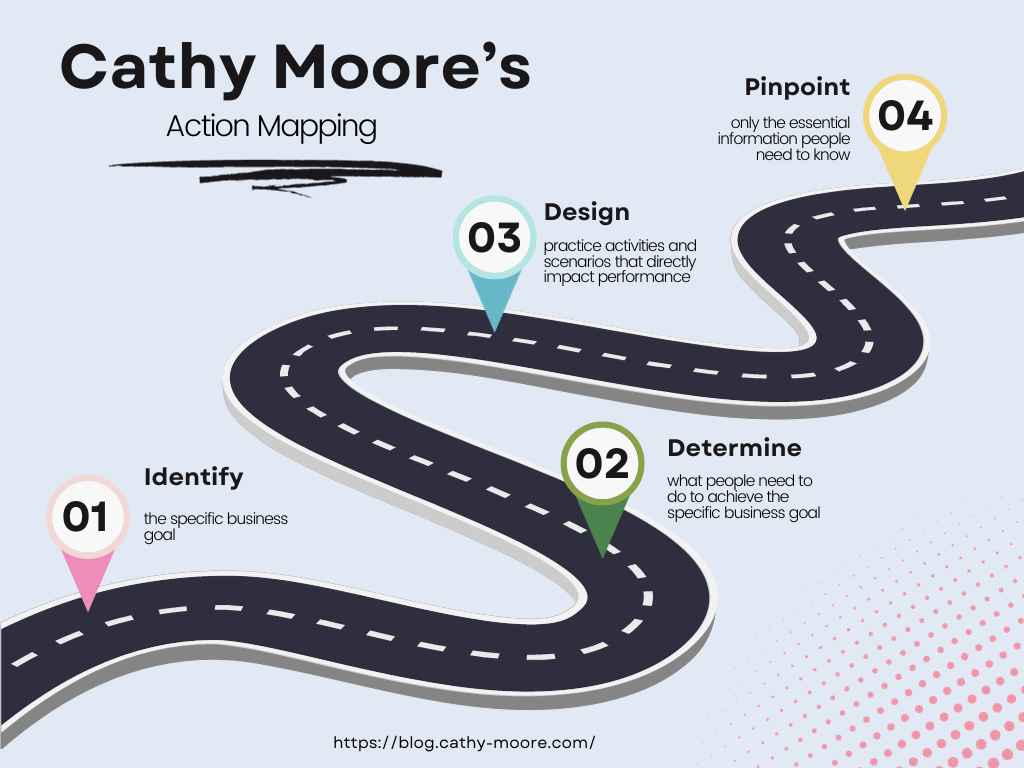In this post, we break down three of the best ADDIE alternatives for developing eLearning content, including the pros and cons of each framework.
Creating a digital training course without an instructional design model is like building a house without a blueprint. You may get lucky and end up with a well-structured home, or you may run into a host of issues along the way.
Instructional design models, such as the ADDIE model, help L&D professionals create efficient and engaging training programs that yield results. However, in recent years, critics of the ADDIE framework have voiced concerns. For some, it’s too linear, rigid, and time-consuming. While others feel it doesn’t focus on the learners enough.
That’s exactly why many instructional designers, seasoned pros and novices alike, have turned to these ADDIE alternatives. Not only do they address the pain points mentioned above, but they can achieve similar results with much fewer resources.
This guide explores three of the best ADDIE model variations that can optimize each step of the content development process.
What is the ADDIE model?
The ADDIE model is an instructional design framework that streamlines and structures the content development process. It comprises five phases: Analysis, Design, Development, Implementation, and Evaluation. Thanks to its structured nature, it’s a commonly used framework for instructional designers.
The best alternatives to ADDIE
ADDIE has lost popularity in recent years. As a result, some eLearning professionals now gravitate toward more agile, learner-centric approaches to training content development.
Here are three excellent ADDIE alternatives that could be a better fit for your course development needs.
1. SAM Model
The Successive Approximation Model (SAM) is an agile approach to training content development. It aims to create a more flexible alternative to ADDIE. The original SAM model consists of three stages:
- Stage 1: Preparation. This stage is all about collecting information, setting expectations and goals, getting to know the audience, and determining budgets and timelines.
- Stage 2: Iterative design. This phase focuses on creating materials, collecting feedback on them, and making revisions. It uses a prototype and factors in several rounds of review.
- Stage 3: Iterative development. The final step concentrates on developing, testing, and refining the prototype until it is ready to launch.
Best for:
SAM answers many of the pain points users of ADDIE have. For instance, it’s an iterative and incremental process rather than a linear one. This makes it more flexible and creates room for continuous feedback and tweaks at every phase of the process. What’s more, the SAM model is more user-centric than the traditional ADDIE framework.
As a result of these differences, SAM is a strong contender for agile learning projects with short development cycles. It’s also a good choice if you plan to integrate technology-based learning into your projects. Finally, since SAM facilitates continuous feedback, this framework works well if you require a high level of stakeholder collaboration.
Pain points:
SAM isn’t ideal for complex, multi-faceted projects or those that require detailed documentation. That said, the SAM2 model is a more comprehensive framework that is better equipped to handle large learning projects.
While it’s ideal for short development cycles, relying on stakeholder feedback can cause delays in the process. It also requires a high degree of cross-team coordination.
Pros and cons:
| Pros | Cons |
|---|---|
| Agile approach works well for short development cycles | Not suitable for complex, highly sequential training programs |
| This model puts the learner at the center, leading to more engaging training | The agile nature of this model means there is little formal documentation, which may be needed for certain projects |
| It’s an iterative process, meaning there’s a great deal of continuous feedback and product testing | It relies on a high level of stakeholder participation, requiring extensive project coordination |
2. Action Mapping
Action mapping is a goal-driven instructional design approach that’s broken down into four steps. It aims to connect learning content to real, on-the-job problems, making it an excellent model for corporate training.
- Stage 1: Identify the business goal. This helps focus the content on what learners actually need to know. In turn, it ensures the course only includes relevant activities that directly relate to this goal.
- Stage 2: Identify what people need to do. This phase determines all the steps or actions employees must take to achieve the specific business goal.
- Stage 3: Design practice activities. At this stage, it’s all about creating practice activities and scenarios that directly impact how employees perform in the workplace.
- Stage 4: Identify what people need to know. The final stage is to ensure that the course content only includes the essential information for each practice activity. Anything else should be removed.
Best for:
Action mapping links training materials to on-the-job performance and business goals. This makes it an excellent choice for workplace learning and plugging skills gaps. In addition, it solves the main pain points with ADDIE by offering an agile and user-centric approach.
Since it focuses solely on the critical content needed to meet a specific performance goal, it can save time in the creation process. Rather than building hefty online courses with tons of irrelevant content, it hones in on the core information. As a result, it’s a more efficient alternative to ADDIE.
This focus on relevance makes it an ideal model if you require high levels of learner engagement. The use of scenario-based learning encourages active learner participation, honing problem-solving and other core competencies in the process.
Pain points:
Action mapping isn’t the best framework if you plan to create a purely theoretical training course. Similarly, it isn’t designed for lengthy foundational courses where the learner requires in-depth coverage of the topic.
Pros and cons:
| Pros | Cons |
|---|---|
| Highly engaging, scenario-based learning that addresses real-life performance issues | Not suitable for in-depth theoretical training content |
| Aligns with specific business goals, making it easy to measure training impact | Requires a good understanding of overall business performance and goals |
| Adopts a streamlined and efficient creation approach that only focuses on core information | It may not go into enough detail for learners with little to no prior knowledge of the topic |

3. Robert Gagne’s Nine Events of Instruction
This framework is based on the behaviorist learning theory (an approach which focuses on how learners interact with their environments to form behaviors). Gagne’s Nine Events of Instruction form a sequential model that aims to increase learner engagement.
- Gain attention: Hook the learners and get them ready for the learning experience.
- Inform learners of objectives: Clearly communicate the learning objectives so learners understand the purpose and value of the training.
- Stimulate recall of prior learning: Refresh learners’ prior knowledge of the topic or any related previous experiences.
- Present the content: Deliver the learning material in a variety of formats and media.
- Provide learning guidance: Offer learners examples, additional explanations, and other forms of guidance to help them understand the content.
- Elicit performance (practice): Facilitate opportunities for learners to practice practice by creating activities that encourage interaction.
- Provide feedback: Give learners immediate feedback to reinforce correct actions.
- Assess performance: Evaluate learners’ knowledge and performance to ensure they’ve met the desired learning objective.
- Enhance retention and transfer: Encourage learners to apply the new knowledge to real-world situations to foster knowledge retention.
Best for:
Gagne’s Nine Events of Instruction offers a structured formula for building training content that resonates with learners. Its logical step-by-step approach is excellent for building learners’ skills from scratch. It also works well in online, blended, and traditional classroom learning.
The model reinforces the importance of feedback and assessment throughout the nine stages. As a result, it is an ideal framework for training programs that focus on ongoing evaluation.
Pain points:
Similar to ADDIE, this approach to training development is linear and sequential. This can make it challenging to implement, especially for organizations with limited time or resources. Moreover, the extensive nine-step model doesn’t lend itself well to training content that needs to be updated regularly.
Gagne’s Nine Events of Instruction relies heavily on following the steps in sequence, which leaves little room for personalization. As such, this can affect learner engagement and make it unsuitable for certain learning scenarios.
Pros and cons:
| Pros | Cons |
|---|---|
| The structured approach is an ideal way to develop specific skills or competencies | The linear model lacks flexibility and may be unrealistic for certain organizations or training scenarios |
| It encourages active learner participation and creates opportunities for hands-on practice, boosting engagement | The sequential nature of this framework doesn’t work well with more modern and adaptive approaches |
| Feedback and assessment are integrated throughout several stages, ensuring ongoing evaluation | The highly detailed model can be too complex to implement for organizations with limited resources, experience, or budgets |
A final word on the top alternatives to ADDIE
We hope these top-class alternatives to ADDIE give you some food for thought and some actionable tips on developing eLearning materials.
Instructional design models act as a blueprint, ensuring the quality and structure of your learning project. They also create a more streamlined and efficient process so you can roll out training under tight timelines.
As such, choosing the right framework and tailoring it to suit your unique needs is paramount for a successful outcome.

By Nicola Wylie
Nicola Wylie is a learning industry expert who loves sharing in-depth insights into the latest trends, challenges, and technologies.
